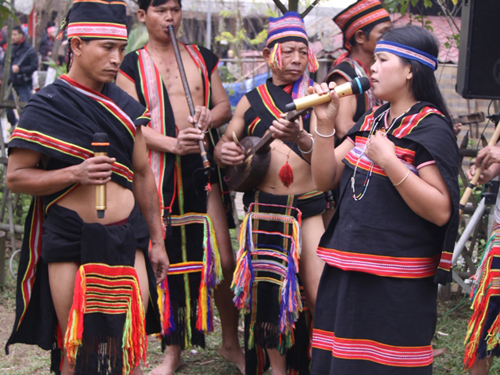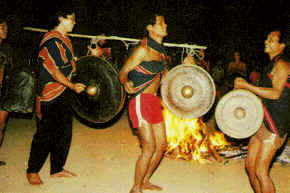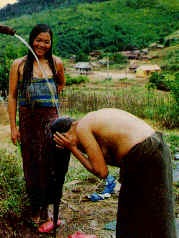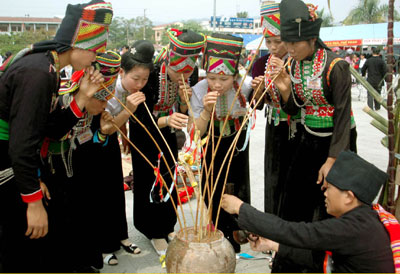The Gie trieng live mainly on cultivation in burnt-over land. Hunting, fishing, and food gathering supply foodstuffs for daily meals. They raise cattle, pigs and poultry chiefly for sacrificial purposes.
Their attire is simple. Men wear loincloths and women wear skirts long enough to cover their. chest, some have adopted a bra sewn into their skirts. In cold weather, a blanket is used. Particularly women in the Bnoong group wear leggings.
The Gie trieng live-in long houses on stilts, some with gabled roofs in vault form like the tortoise carapace. Generally, houses in the village are arranged in a circle around the wrong (communal house) which is unlike the other wrongs of some other ethnic groups. A corridor, running from one end to the other, divides the house into two compartments. One for males and the other for females.
Each inhabitant (except for the Bnoong grou pi has a name and surname but the family name is different between male and female. Each family lineage has its specific taboos and an old tale explaining the lineage and taboos. Formerly, sons took the father's family name and daughters the mother's. According to old custom's, boys of about to years of age spend the night at the communal house. At age 13-15, they file their teeth and will take a wife a few years later. The young girl decides her marriage on her own initiative and her choice is respected by her family. Before becoming-husband and wife, the young man should know basketry and gong playing and the young woman should be good at mat making and cloth weaving (in areas having the weaving trade). The young woman must have 100 faggots of firewood ready for supply to the young man's family at wedding party. The newly married couple generally accept matrilocality in 3-4 years then shill to patrilocality in equal years, in rotation until the parents of one side are no more'to decide their fixed settlement.
The Gie trieng believe that all beings have "soul" and "spirit", so ritual ceremonies and the watching of good or bad omens have prevailed. The sacrifice of a buffalo is the greatest. Apart from family rituals, once in several years the entire village jointly hold a ceremony to pray for peace and express gratitude to the spirits with a buffalo-stabbing practice. The dead person is buried in a pirogue-shaped coffin decorated with sculptured buffalo head.






